Baking Adventures
Irish Soda Bread for the holiday and Dill Pickle Biskits with a boy
Since it was St. Patrick’s Day, Irish Soda Bread was on my To Do list, and I waited until the kids were home from school. But Mondays are long days for two and almost four-year-olds, and I could not recruit the little rascals who wanted to zone out watching cartoons after school. I always make a lot of soda bread to honor my friend Joann Dornich, who shared her Grandma’s recipe and always baked many loaves and delivered them all over town. I try to do the same.
To carry on the green theme for St. Patrick’s Day, I am reminded of another baking session from February that used up some pickles that Kirk had made in October. The jar was in the back of the fridge, with just a few pickles floating around from our homemade dill pickle activity. They were still good, and I had mentally reserved them for a biscuit recipe that I saw on the New York Times website.
But I had a boy helping me, and the care and precision of Andy Baraghani’s recipe were not in our bailiwick. Kirk is 3. We needed to make them, as he says, “however way we want.”
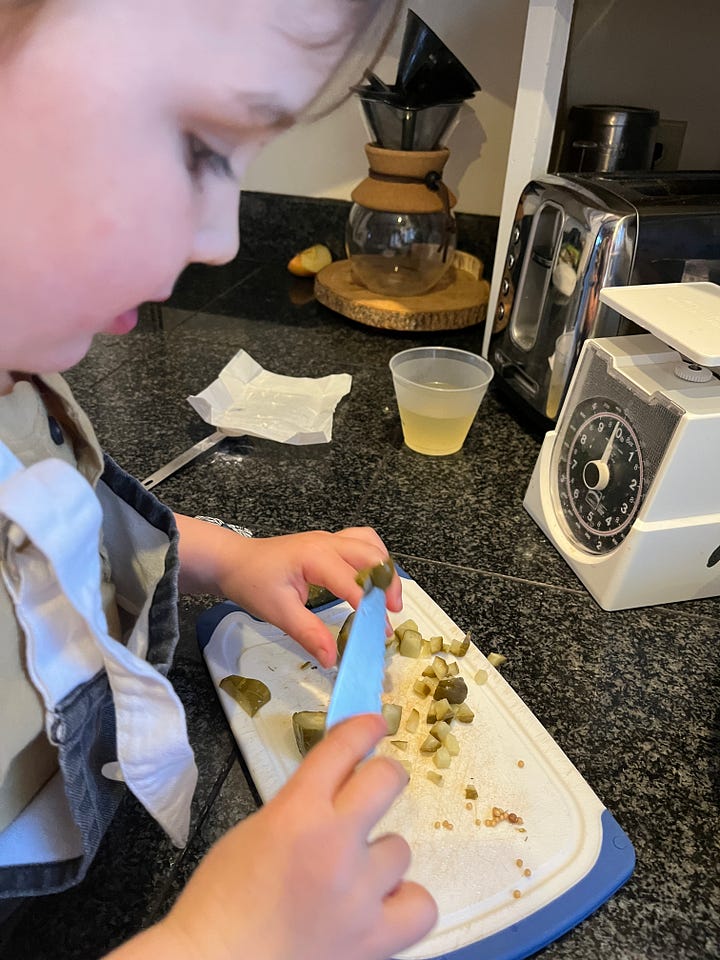

Our recipe was about half the size and it went together quickly—as a biscuit should go together. We took some tips from the original recipe and did some folding and rolling, but not nearly as much. When Kirk is cooking, he’s in a hurry to finish it and lick the bowl. He’s a taster. He even wanted to drink some of the pickle brine, so I poured him a glass, and he realized it was way too salty to drink. Everyday lessons like that are so valuable.
Kirk’s biscuits were irregular and gnarly looking, but they were so delicious. I heartily encourage you to take some chopped-up dill pickles and brine and add them to your biscuits for a remarkable crustiness and tenderness. It’s easy enough for a three-year-old. You can do it.
Kirk’s Pickle Biskits
(spelled by someone not quite 4)
Makes about 16
2 cups AP flour
1 tablespoon baking powder
¼ teaspoon baking soda
2 teaspoons sugar
½ teaspoon salt
1/3 cup cold unsalted butter, cut into small bits
½ cup chopped up dill pickles
½ cup buttermilk
¼ cup dill pickle juice
1 tablespoon butter, melted
Heat the oven to 450°F. Prepare a baking sheet by lining it with parchment paper or spraying it with non-stick spray. Mix the flour, baking powder, baking soda, sugar, and salt in a large bowl. (Andy’s recipe calls for adding freshly ground black pepper, but Kirk didn’t want to put that in.)
Add the cold butter bits to the dry ingredients and mash the flour into the butter with your fingers. Add the chopped pickles and toss to combine. Add the buttermilk and the pickle juice and toss it all together with a fork until it all looks evenly moist.
Place the shaggy dough on a floured work surface and pat it out into a one-inch thick rectangle. Divide the dough into quarters, place the quarters on top of each other, and roll it out into another rectangle. Divide that into four quarters again. Stack the quarters and roll out until it is one inch thick. Divide the dough with a bench scraper into 16 pieces and place them on the prepared baking sheet. Put the biskits in the freezer for a few minutes. If you are in Wyoming, where it was 17 degrees when we made them, we just put the baking sheet outside for a few minutes.
When you are ready to bake them, brush the tops with melted butter and put them in the oven for 12-15 minutes, until they are risen and golden brown. Eat one when it is cool enough to handle, and you will thank yourself.
If you are curious as to why the recipe calls for both baking powder and baking soda, Once Upon a Chef provides a good explanation.
And here is the Irish Soda Bread recipe for more adventures in baking with buttermilk and using both baking powder and baking soda to get a good rise.
Joann Dornich’s Irish Soda Bread
Makes 1 round loaf
2 cups AP flour
1 cup whole wheat flour
3 tablespoons sugar
1 tablespoon baking powder
½ teaspoon baking soda
½ teaspoon salt
1 cup currants or raisins or a mixture—or any dried fruit that you have on hand
1 1/3 cup buttermilk
2 teaspoons caraway seeds
Glaze:
2 tablespoons brown sugar
2 tablespoons hot water
Preheat the oven to 375°. In a medium-sized bowl, add the AP flour, whole wheat flour, three tablespoons of sugar, baking powder, baking soda, and salt. Mix in currants and caraway seeds. Add buttermilk and mix until well blended (the dough will be sticky).
Turn out onto a lightly floured board and knead about 10 times. Shape into an 8-inch round loaf. Place on a greased (or sprayed or parchment-lined) baking sheet. Cut a cross (+) into the top of the loaf with a sharp knife. (Note: Joann cuts this really deeply, about a third of the way into the dough.)
Bake at 375° for 45 minutes. Dissolve brown sugar for the glaze in the hot water in a cup and brush generously over the hot loaf. Bake ten minutes longer until richly golden brown.
You can divide the dough in two and make two smaller loaves. Just reduce the baking time. Full disclosure: I usually double the recipe and make four loaves out of it. The best part of the soda bread is toasting and buttering a slice the next day. Irish butter preferred, namely Kerrygold Salted.



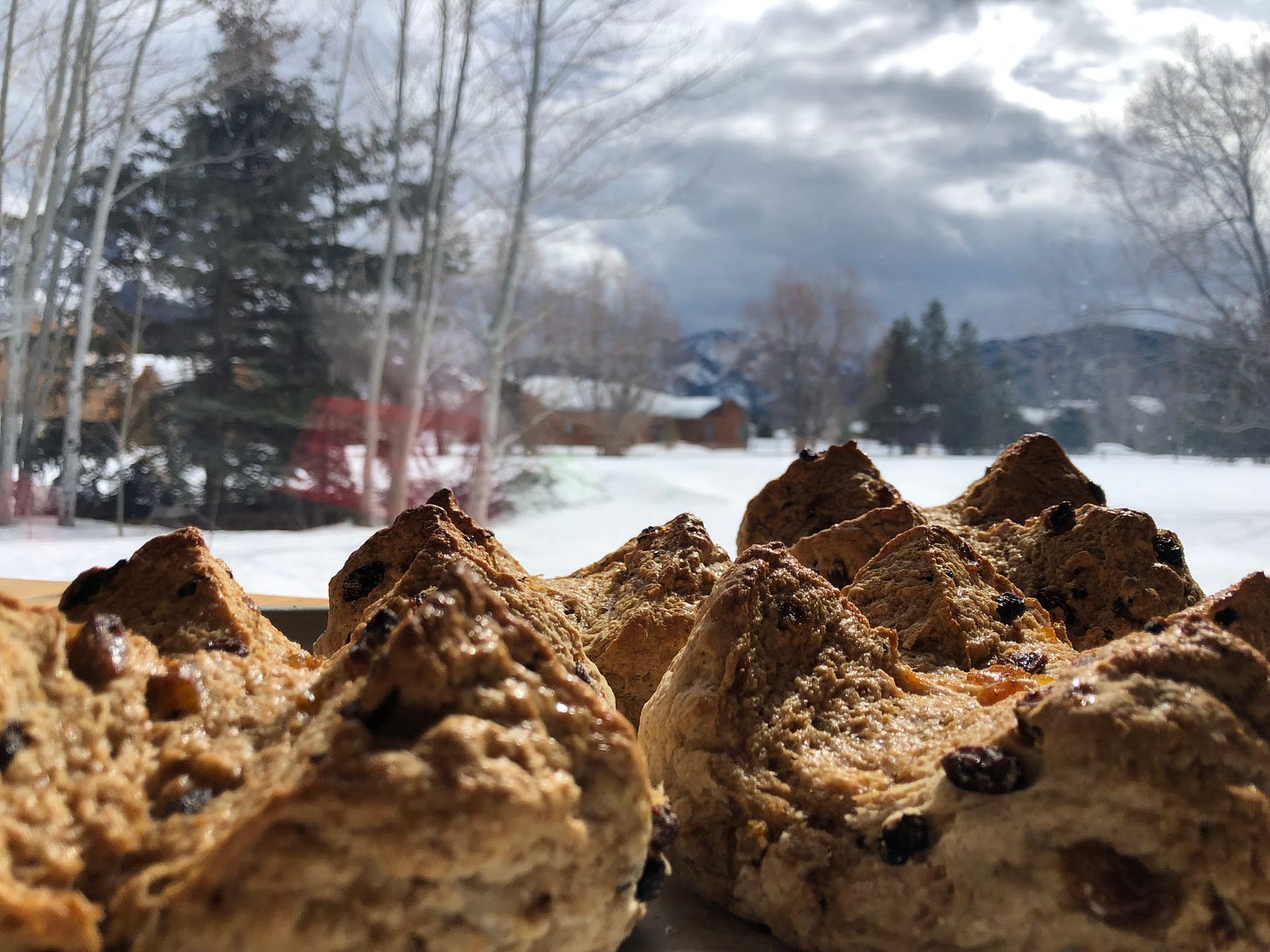
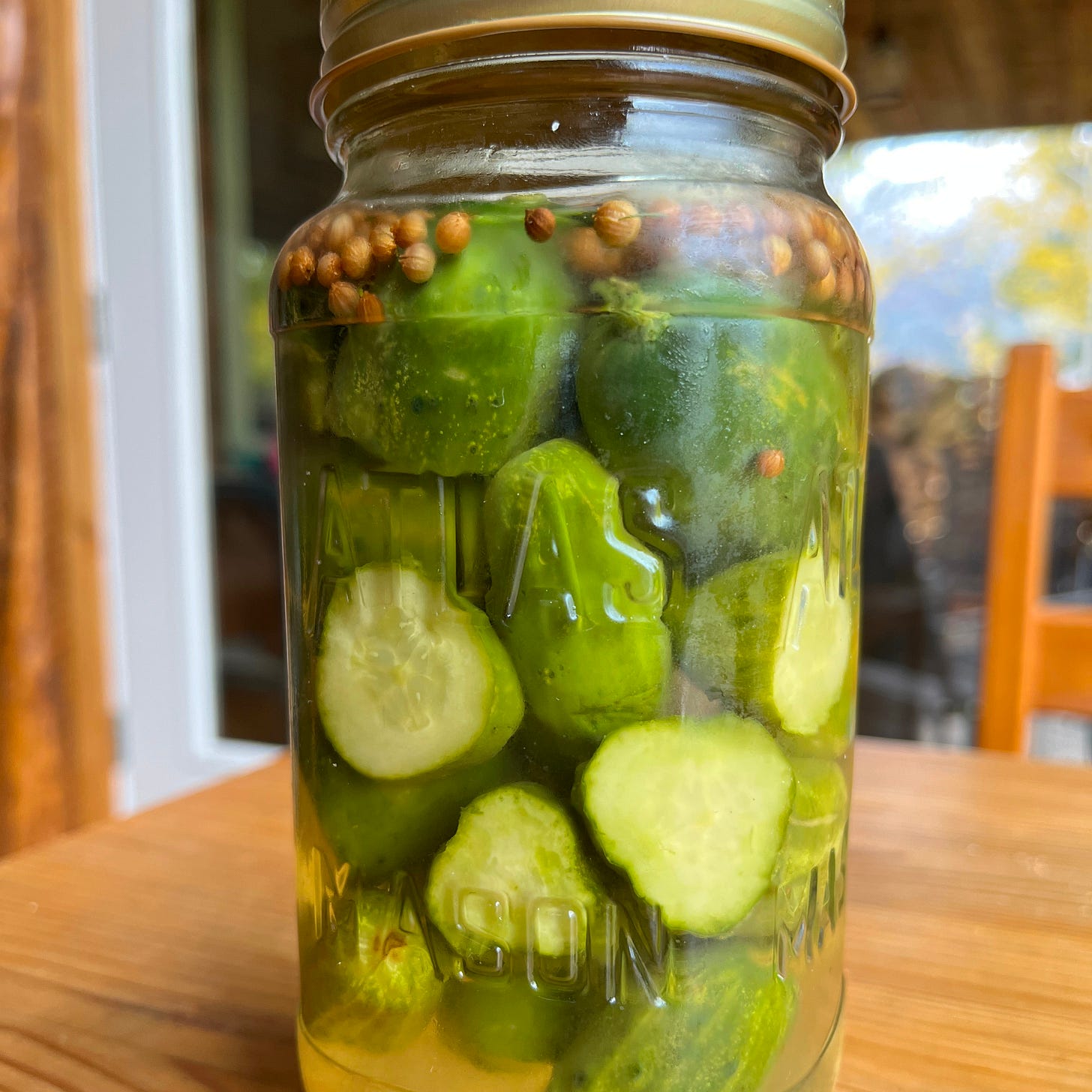

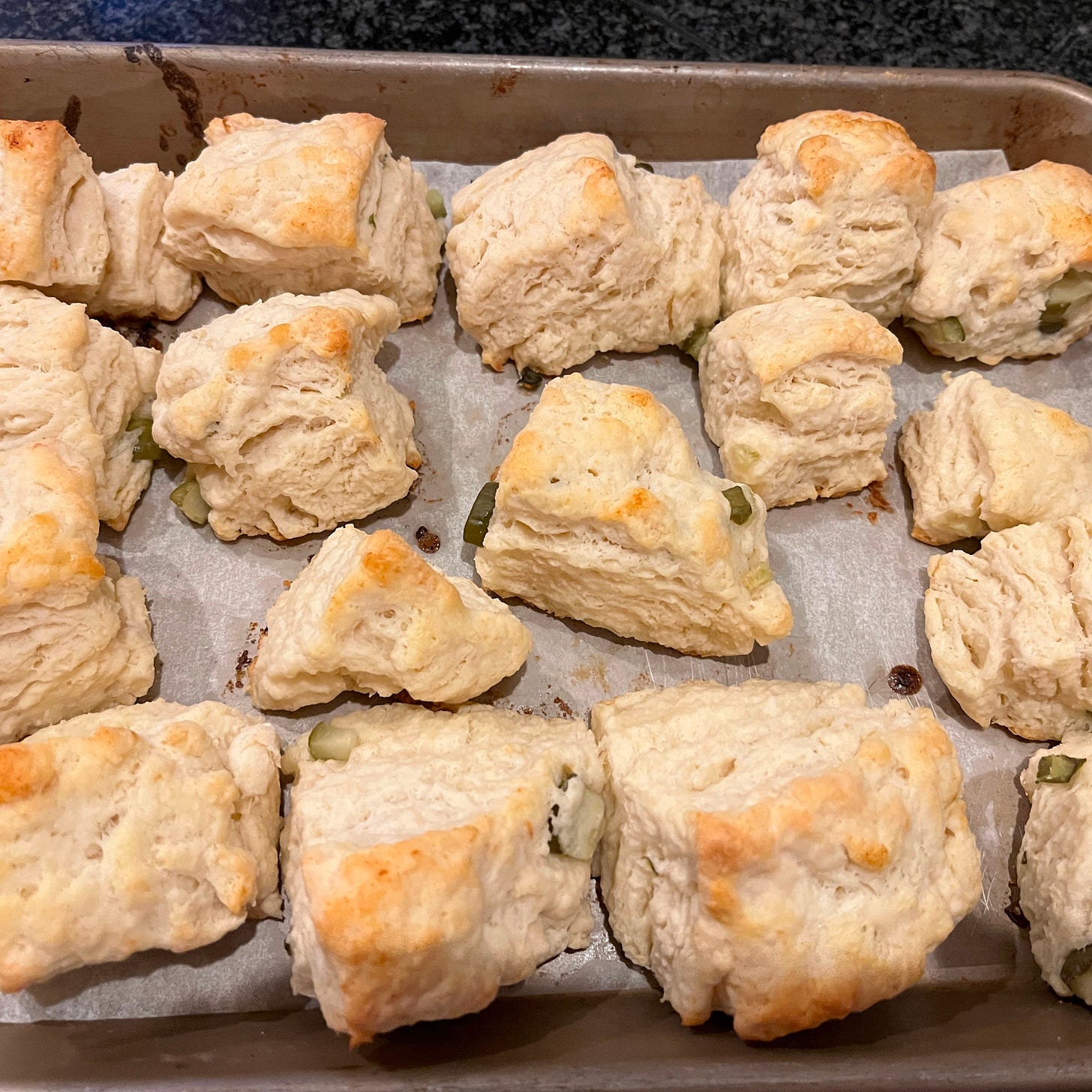

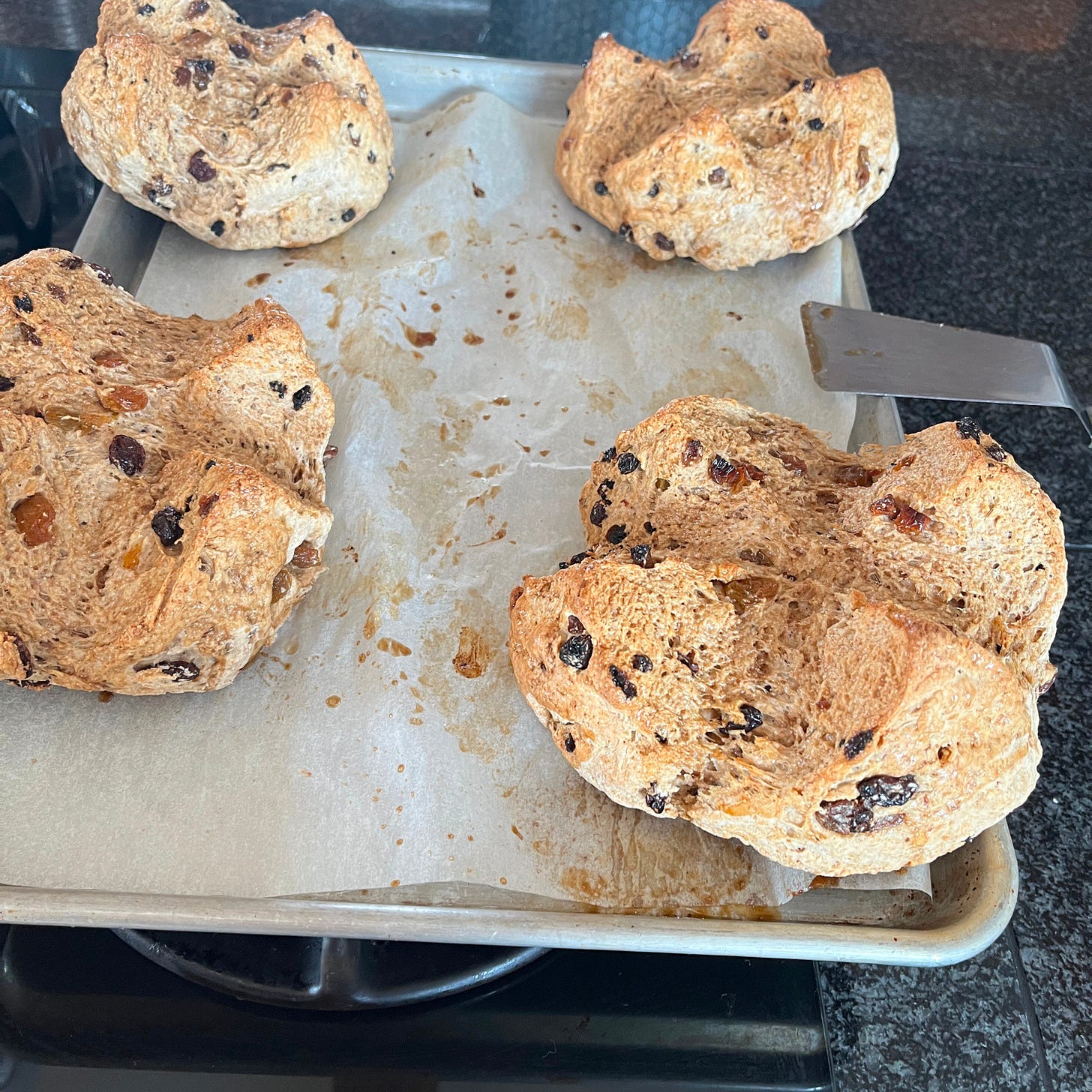
Bravo Kirk!